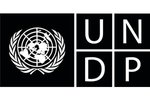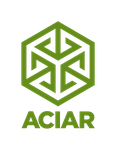Understanding blended learning
What is blended learning, and how does it benefit learners?
Blended learning is an educational pedagogy that combines two or more teaching methods, with the most common being a hybrid of online and in-person learning.
The approach typically involves completing some learning online through a learning management system, live virtual sessions or other online mediums, and some in person, in a classroom setting or similar.
The goal is to create a more impactful and flexible learning experience.
Catalpa’s education and skills training programs are designed using our research that suggests a blended learning approach has many benefits. Using blended learning we can deliver:
A more personalised learning experience
Learners can study at their own pace and in a way that best suits their needs and preferences. The inclusion of different learning mediums (such as such as live classes, video recordings, readings, group work, podcasts and projects) has been shown to have a positive effect on learning outcomes. Enabling offline learning (especially via a mobile device) can be particularly beneficial for learners who have busy schedules or who live in remote areas without reliable internet access.
Increased engagement
Learner engagement is enhanced by the provision of a variety of learning activities and resources (these may include multimedia, online discussions, interactive exercises, and traditional classroom activities). Notifications can be used to alert learners when new content becomes available or to encourage them back to their learning. Unlike one-off training sessions, learners can continue to engage with content over longer periods of time which supports a continuous learning approach. Teachers and trainers can adjust modalities of delivery to suit the cohort and this responsiveness to learner needs and interest can encourage engagement and promote self-led learning.
Improved effectiveness
Being able to use a wide variety of teaching methods and resources enables teachers and trainers to cater to different learner needs. An independent evaluation of our Kumul Helt Skul program published in The Lancet Regional Health - Western Pacific journal concluded that the blended learning model was highly effective and that “the use of digital learning to facilitate triage implementation in resource-limited emergency departments is feasible and effective when coupled with peer mentoring and embedded in a broader development program”.
The model also enables learning designers to gather feedback; for example smile-o-metre, likert scales, and comments, which provide valuable insights and assist in making improvements to the learning content and experience.
Designing a successful blended learning experience
Successful education programs are underpinned by deep understanding of the learner, their motivations, barriers to learning and environmental context. In order to design a successful learning experience it is necessary to adopt a co-design approach that incorporates regular cycles of feedback and improvement. At Catalpa, we work to ensure learning design is both community-driven and culturally responsive.
Under the digital pedagogy umbrella, we are focused on a more specific approach - called microlearning - for the flexibility it offers to learners, trainers and content developers. Microlearning involves short-but-focused lessons and content is kept succinct and practical making it easier to understand and navigate for those with limited education or exposure to technology.
A cohesive and engaging blended learning experience
By its very definition, blended learning is the culmination of diverse modalities. Though the learner is engaging in different ways, it is critical that the overall learning experience is cohesive and makes sense as a whole. This experience will depend on:
Choosing the right platform
There are many different platforms available for delivering online learning, such as learning management systems, online course platforms, and virtual classrooms. Choose a platform that meets the needs of your learners and aligns with your goals. Bero, for example, has been designed to meet the unique challenges of remote and low-resourced communities.
Identifying clear outcomes
Courses designed with constructive alignment ensure training is practical and focused on outcomes. The best way to achieve this is with backwards design, identifying learning outcomes and building content, teaching resources and assessments from this point. On Bero, we typically aim for one learning objective to be achieved in each bitesize lesson.
Making the best use of trainers
It's important that the people tasked with facilitating the learning experience are familiar with the platform and materials you'll be using, as well as the pedagogy of blended learning. Consider providing training or professional development opportunities to help them get up to speed. With skilled trainers you can offer a variety of mentoring and coaching support to enhance learner retention and completion.
Communicating with your learners
Ensure you communicate clearly with your learners about how your blended learning program will work. Let them know what they can expect in terms of online and in-person activities, as well as how they can access course materials and resources. If you haven’t already, consider how the courses could be recognised for formal qualification or certification such as a micro-credential or professional development points to further strengthen learner engagement, retention and completion rates.
Monitoring, evaluating and learning
It's vitally important to monitor and evaluate the effectiveness of any learning experience. This may involve collecting data on student outcomes, engagement, and satisfaction, and using this data to make any necessary adjustments to the program.
Learners' lives are complex, busy and unique. Blended learning allows learning designers to leverage the best of multiple modes of learning, not only for user flexibility, but also to increase engagement, retention and account for differing learning styles.
At Catalpa, we’ve used blended learning to upskill healthcare workers in Papua New Guinea, improve science learning in Pacific Island high schools, create remote professional development opportunities for remote agricultural researchers, and more.














